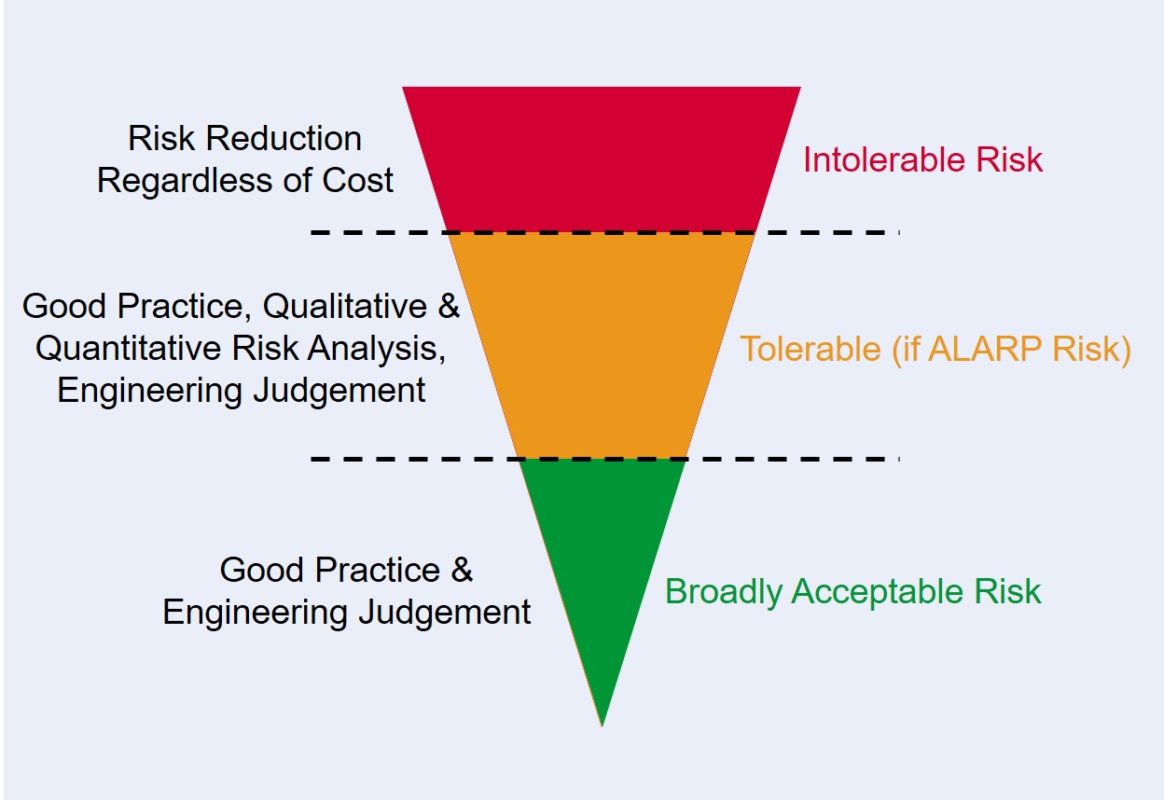ALARP Assessment
The ALARP (AS LOW AS REASONABLY PRACTICABLE) Demonstration is a critical step in the projects.
It involves a thorough review of risk assessments conducted for the project to identify key risk drivers and
potential design measures for risk reduction. The objective is to evaluate the acceptability of existing
design measures and propose additional risk reduction measures for specific Major Accident Events (MAEs).

